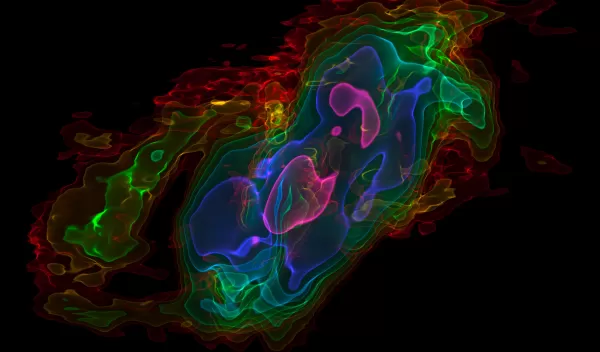
'Cells to Galaxies' unites astronomers, medical imaging experts to advance both fields
In May 2024, experts from the U.S. National Science Foundation National Radio Astronomy Observatory (NSF NRAO) and the medical imaging field presented at the International Society for Magnetic Resonance in Medicine conference on the surprising similarities between radio astronomy and MRI techniques. Their collaboration grew from the Cells to Galaxies initiative led by NSF NRAO, which has convened a series of events starting in 2019 exploring challenges shared by the two fields — and possible solutions.
"Astronomy has a history of contributing technology and techniques to medical imaging that have proven to be valuable for human health," says Joe Pesce, NSF program director for NRAO. "This ongoing effort by NRAO promises to add to that legacy — there is significant potential for future cross-disciplinary impacts inspired by cutting-edge radio astronomy."
Radio astronomy and medical imaging fields have evolved nearly independently for the past 50 years, sometimes solving the same problem at different times. Exploring these shared challenges and methods may help accelerate future advancements in both fields more directly.
For example, over the past two decades, advances in medical MRI scans through improvements in compressed sensing and parallel imaging have significantly reduced scan time while maintaining image quality — methods that astronomers have been using for years in radio telescope arrays like the Atacama Large Millimeter/submillimeter Array and the NSF Karl G. Jansky Very Large Array.
"These fields have arrived at almost a common problem from different angles," explains NSF NRAO scientist Urvashi Rau, who presented at the conference. "Which means each field has explored some angle in much more depth than others, so there's a lot to share."
